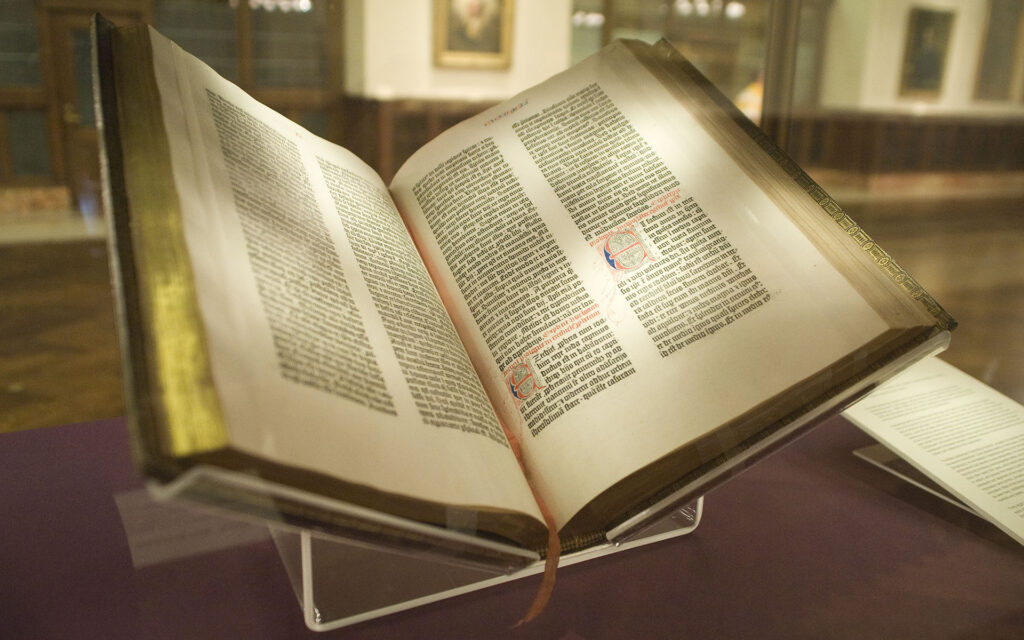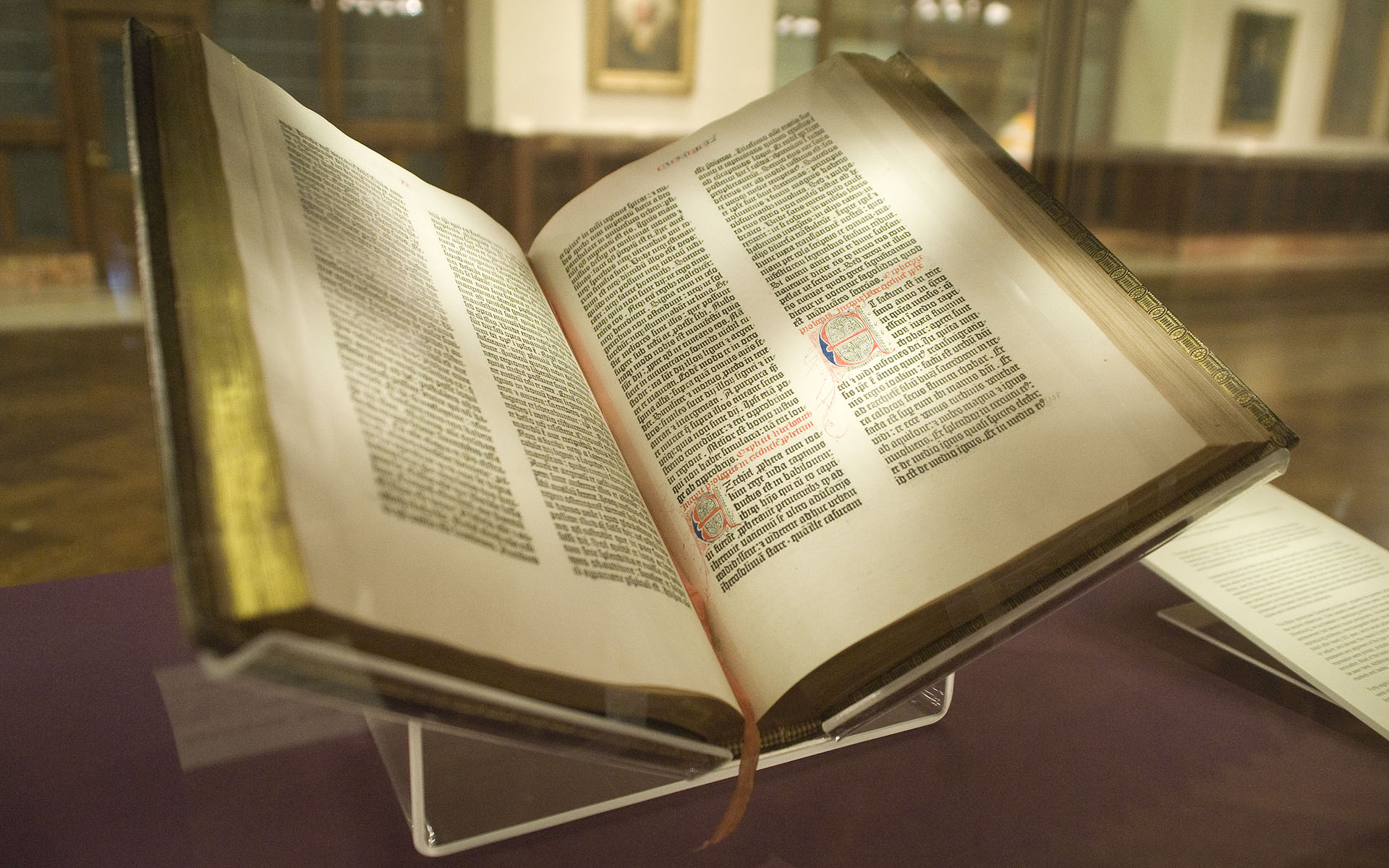
Unveiling the Earliest Scriptures: Exploring the 1st Bible Written
The question of which was the 1st Bible written is a complex one, steeped in history, translation, and evolving definitions of what constitutes a ‘Bible’. The term ‘Bible’ itself, derived from the Greek ‘biblia’ meaning ‘books’, points to a collection of texts rather than a single, monolithic work. Therefore, pinpointing the absolute 1st Bible written requires a nuanced understanding of the historical context and the development of biblical canon. This article will delve into the fascinating journey of the earliest scriptures, examining the candidates for the 1st Bible written and exploring the different perspectives surrounding this intriguing question.
Defining the “1st Bible Written”: A Matter of Perspective
Before attempting to identify the 1st Bible written, we must first clarify what we mean by ‘Bible’. Do we mean the first complete collection of texts that aligns with a modern, standardized version? Or are we interested in the earliest individual books that later became part of the biblical canon? The answer significantly impacts our search.
Furthermore, the concept of a definitive ‘Bible’ is relatively recent. For centuries, different Jewish and Christian communities used varying collections of texts. The standardization of the biblical canon occurred gradually through councils and scholarly consensus. Therefore, the 1st Bible written, in the sense of a universally accepted, complete collection, is a later development than the individual texts that comprise it.
The Hebrew Bible (Tanakh): Foundations of the Scriptures
The Hebrew Bible, also known as the Tanakh, forms the foundation of both Judaism and Christianity. It is comprised of three main sections: the Torah (the Law), the Nevi’im (the Prophets), and the Ketuvim (the Writings). These texts were written and compiled over several centuries, making it difficult to pinpoint a single ‘1st Bible written‘ within this collection. However, we can examine the earliest components.
The Torah: The Earliest Biblical Texts
The Torah, consisting of the first five books of the Hebrew Bible (Genesis, Exodus, Leviticus, Numbers, and Deuteronomy), is generally considered the earliest part of the Hebrew Bible to be written. While the exact dating is debated among scholars, it is believed that the Torah began to take shape during the Iron Age, potentially as early as the 10th century BCE. The narratives, laws, and poetry contained within the Torah represent some of the oldest religious texts in existence. While not a complete ‘Bible’ in the modern sense, the Torah represents a crucial step in the development of the scriptures.
The Development of the Nevi’im and Ketuvim
Following the Torah, the Nevi’im (Prophets) and Ketuvim (Writings) were gradually added to the Hebrew Bible. The Nevi’im include historical accounts and prophetic messages, while the Ketuvim encompass a diverse range of texts such as poetry, wisdom literature, and historical narratives. The compilation of these sections continued over several centuries, with some books being written as late as the Hellenistic period (3rd-1st centuries BCE). Determining the precise order and dating of these texts is a complex task, but it’s clear that the Torah predates the other sections of the Hebrew Bible.
The Septuagint: A Greek Translation and Expansion
In the 3rd century BCE, a significant development occurred with the translation of the Hebrew Bible into Greek. This translation, known as the Septuagint (LXX), was commissioned by the Greek-speaking Jewish community in Alexandria, Egypt. The Septuagint not only translated the existing Hebrew texts but also included additional books and revisions. This version became widely used by Greek-speaking Jews and later by early Christians. The Septuagint represents a pivotal moment in the history of the Bible, as it made the scriptures accessible to a wider audience and influenced the development of the Christian Old Testament. Was this the 1st Bible written in a new language? It depends on your definition.
The Christian Bible: Building Upon the Foundations
The Christian Bible builds upon the foundation of the Hebrew Bible (which Christians refer to as the Old Testament) by adding the New Testament. The New Testament consists of the Gospels, the Acts of the Apostles, the Epistles (letters), and the Book of Revelation. These texts were written in Greek during the 1st century CE and early 2nd century CE. The New Testament focuses on the life, teachings, death, and resurrection of Jesus Christ, and it represents a distinct theological perspective from the Hebrew Bible.
The Gospels: Narratives of Jesus’ Life
The Gospels (Matthew, Mark, Luke, and John) are narratives that recount the life, teachings, and miracles of Jesus. They are considered the core of the New Testament and provide different perspectives on Jesus’ ministry. While scholars debate the exact dating and authorship of the Gospels, they are generally believed to have been written between 60 CE and 100 CE. These texts, along with the other books of the New Testament, contributed to the formation of the Christian Bible. But again, the question remains, what constitutes the 1st Bible written?
The Compilation of the Christian Canon
The compilation of the Christian biblical canon was a gradual process that spanned several centuries. Different Christian communities used varying collections of texts, and there was no universally accepted list of books until the 4th century CE. The Council of Rome in 382 CE and the Council of Carthage in 397 CE played a significant role in establishing the canon of the New Testament. However, even after these councils, some disagreements persisted regarding the inclusion of certain books. The standardization of the Christian Bible represents a complex and evolving process.
The Codex Sinaiticus and Codex Vaticanus: Early Complete Bibles
Two of the oldest and most complete Bibles in existence are the Codex Sinaiticus and the Codex Vaticanus. These manuscripts, written in Greek on parchment, date back to the 4th century CE. The Codex Sinaiticus contains both the Old Testament (including the Septuagint) and the New Testament, while the Codex Vaticanus contains most of the Old Testament and the New Testament. These codices provide valuable insights into the text of the Bible and the development of the biblical canon. They are often cited as examples of early complete Bibles, though they were preceded by centuries of textual development and compilation.
So, Which Was the 1st Bible Written? A Conclusion
The quest to identify the 1st Bible written is not a straightforward one. The answer depends on how we define ‘Bible’ and what criteria we use to evaluate the evidence. If we are looking for the earliest individual texts that later became part of the biblical canon, then the Torah (the first five books of the Hebrew Bible) is a strong contender. If we are looking for the earliest complete collection of texts that resembles a modern Bible, then the Codex Sinaiticus and Codex Vaticanus are important examples, though they represent a later stage in the development of the scriptures.
Ultimately, the history of the Bible is a story of gradual development, translation, and compilation. There was no single moment when the ‘1st Bible written‘ appeared. Instead, the scriptures evolved over centuries, shaped by diverse communities and theological perspectives. Understanding this complex history is crucial to appreciating the richness and depth of the biblical tradition. The idea of the 1st Bible written is less about finding a single artifact and more about understanding the journey of scripture itself.
The search for the 1st Bible written leads us to appreciate the long and complex history of the scriptures. From the early oral traditions to the written texts of the Torah and the later compilation of the Hebrew Bible and the Christian New Testament, the Bible has been shaped by diverse communities and theological perspectives. While pinpointing the absolute 1st Bible written may be impossible, exploring the earliest biblical texts provides valuable insights into the origins of Judaism and Christianity. [See also: History of the Bible] [See also: Biblical Archaeology] [See also: Development of the Biblical Canon] The legacy of the 1st Bible written, in whatever form it may have taken, continues to resonate today.

